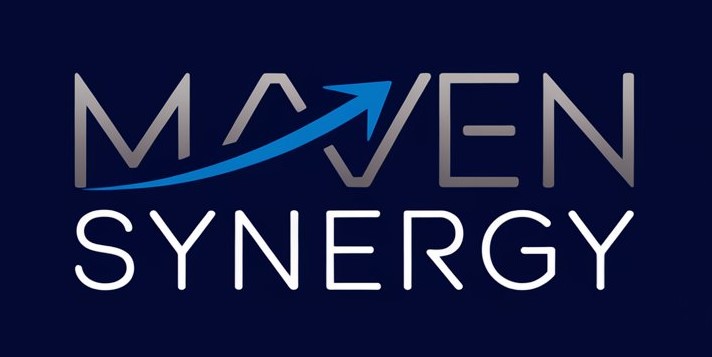How to Invest for Beginners: A Step-by-Step Guide to Start with Just $100
Think you need thousands of dollars to start investing? Think again. You can begin building wealth with just $100—yes, $100!
Every great investment journey starts with one step. Today, I’ll show you how to take it. Whether you’re a college student, a young professional, or simply looking to escape financial uncertainty, this guide will reshape how you view money and investing.
Let me make this clear: investing is not about having a fortune—it’s about making smart choices that grow your money over time. Here’s the best part: You don’t need to be a financial wizard to start. All you need is guidance, patience, and the courage to take that first step.
Think of this guide as your financial GPS. Ready to turn $100 into your ticket to financial freedom? Let’s dive in.
Just before we start, here’s a quick question:
What is Investing?
It’s simple. Investing means putting your money to work so it can grow over time. You allocate resources—usually money—expecting to generate income or profit.
Now that you know the basics, let’s uncover the steps to turn your $100 into a powerful start toward financial freedom!
1. Why Start Investing with $100?

Let’s break down why your $100 is more powerful than you think. Many people dream of investing but get stuck believing they need thousands to start. That’s a total myth! You don’t need a fortune to begin building wealth. In fact, starting small can be one of the SMARTEST financial moves you’ll ever make. Let me show you why.
1.1 Benefits of Early Investing
I’m about to show you the magic of getting started early. Trust me, your future self will thank you.
- Power of Compounding: Your $100 isn’t just $100 —it’s a seed for future wealth. Think of it like planting a tree. At first, it’s just a tiny sapling, but with time, it grows into something massive. Here’s the math: If you invest $100 monthly at a 7% annual return. In 30 years, you could turn that into over $122,000! That’s the incredible power of compound interest. It’s like your money working overtime while you sleep.
- Building Financial Discipline: Starting small teaches you crucial money management skills. You’ll learn to:
- Track your investments: Watching your money grow is addictive (in a good way).
- Understand market movements: You’ll start noticing trends and learning how to ride the waves.
- Make strategic financial decisions: Investing isn’t just about throwing money at stocks; it’s about making smart, informed choices.
1.2 Debunking the “I Need a Lot of Money” Myth
Let me give you a real-life example. My friend Jake started investing just $50 a month in index funds when he was 22. By 35, he had over $25,000 without breaking a sweat. The secret? Consistency and smart choices.
Here’s the thing: You don’t need to be a millionaire to start investing. You just need to START. Even small amounts can grow into something significant over time. The sooner you begin, the more time your money has to work for you.
1.3 Importance of Setting Financial Goals
Before you invest a single dollar, you need to know WHY you’re investing. Are you saving for a dream vacation? A down payment on a house? Retirement? Your goals will shape your investment strategy.
Here’s a quick breakdown:
| Goal Type | Description | Investment Strategy |
| Short-Term Goals | 1-3 years | Low-risk options like high-yield savings |
| Mid-Term Goals | 3-10 years | A balanced mix of stocks and bonds |
| Long-Term Goals | 10+ years | Aggressive stock-based investments |
Pro Tip #1: Always align your investments with your specific financial objectives. If you’re saving for a short-term goal, you don’t want to risk losing your money in a volatile market. But if you’re investing for retirement 30 years down the line, you can afford to take more risks.
2. Step 1: Build a Foundation with Low-Risk Options

2.1 Emergency Fund First
Before diving into investments, I want you to create a financial safety net. Your first mission: Open a high-yield savings account.
Why? Because financial stability is sexy, and nothing beats having a cushion when unexpected expenses hit. Imagine your car breaks down, or you lose your job. An emergency fund ensures you don’t have to dip into your investments or go into debt.
Characteristics of a Solid Emergency Fund:
- Covers 3-6 months of living expenses
- Easily accessible (no penalties for withdrawals)
- Earns some interest (high-yield accounts offer better rates than traditional savings accounts)
- Protects you from going into debt
2.2 Why Start Small
Starting small isn’t just smart—it’s strategic. Here’s why:
- Minimize Emotional Investing: Large investments can make you panic during market fluctuations. Small starts help you learn without massive risk. You’ll sleep better at night knowing you’re not betting the farm.
- Build Investing Confidence: Each small win builds your financial muscle. You’ll learn, adapt, and grow. Think of your first $100 investment like learning to ride a bike. You’ll wobble, maybe fall, but you’ll eventually cruise confidently.
Investment Risk Comparison Table
| Investment Type | Risk Level | Potential Returns | Ideal For |
| High-Yield Savings | Very Low (1/10) | 1-3% | Emergency funds |
| Index Funds | Low (3/10) | 6-8% | Beginners |
| Individual Stocks | Moderate (6/10) | Varies | Learning investors |
| Cryptocurrencies | High (9/10) | Unpredictable | Experienced investors |
Remember: Your $100 is your financial education ticket. Invest wisely, learn constantly, and watch your money grow!
By now, you should see that starting with $100 isn’t just possible—it’s POWERFUL. You’re not just investing money; you’re investing in your future. Ready to take the next step? Let’s keep going!
3. Step 2: Diversify Your Investments

Let’s get one thing straight: Diversification is your financial superhero, and index funds and ETFs are its trusted sidekicks. Think of them as the Swiss Army knife of investing—versatile, reliable, and perfect for beginners. Why? Because they spread your money across a wide range of assets, reducing your risk while still giving you solid returns.
3.1 Index Funds and ETFs: Your Low-Risk Investment Playground
If you’re new to investing, index funds and ETFs (Exchange-Traded Funds) are your BEST friends. They’re like a buffet—you get a little bit of everything without having to pick each dish yourself.
Why Index Funds and ETFs Rock:
- Instant Diversification: Instead of betting on one company, you’re investing in hundreds or even thousands. If one company tanks, it won’t sink your entire portfolio.
- Lower Fees: Unlike managed funds, which charge high fees for professional management, index funds and ETFs are passively managed. That means lower costs and more money in YOUR pocket.
- Minimal Investment Required: You can start with as little as $1 on some platforms. No need to break the bank!
- Track Entire Market Segments: Whether it’s the S&P 500, tech stocks, or international markets, there’s an index fund or ETF for almost everything.
Pro Tip #3: Platforms like Vanguard, Fidelity, and Schwab offer incredible low-cost index fund options for beginners. Here’s a quick comparison:
| Top Index Funds for Beginners | Minimum Investment | Avg. Annual Returns |
| Vanguard S&P 500 ETF (VOO) | 1−1−100 | 10-12% |
| Schwab Total Stock Market Index Fund | $1 | 9-11% |
| iShares Core S&P Total US Stock Market | $5 | 10-12% |
3.2 Real Estate Investment Trusts (REITs): Passive Income Magic
Want to own real estate without buying an entire building? REITs are your golden ticket! These investment vehicles let you earn passive income from property investments with minimal capital.
How REITs Work:
REITs pool money from multiple investors to buy and manage properties like office buildings, apartments, or shopping malls. You earn a share of the rental income and property appreciation without dealing with tenants or leaky faucets.
Exciting REIT Options:
- Fundrise: Start with just $500 and invest in private real estate projects.
- Publicly Traded REITs: Buy shares on stock exchanges like any other stock.
- Real Estate Crowdfunding Platforms: Platforms like RealtyMogul or CrowdStreet let you invest in specific properties.
Why REITs Are Awesome:
- Passive Income: Earn regular dividends from rental income.
- Diversification: Add real estate to your portfolio without the hassle of being a landlord.
- Liquidity: Unlike physical property, you can buy and sell REITs easily.
4. Step 3: Moderate-Risk Investments for Growth

Ready to level up? Let’s talk about moderate-risk investments that can supercharge your portfolio.
4.1 Individual Stocks: Your Growth Potential Accelerator
BUCKLE UP! Individual stocks can supercharge your investment journey. But remember, with great potential comes great responsibility.
Stock Picking 101:
- Research Company Fundamentals: Look for companies with strong financials, like positive earnings and low debt.
- Look for Consistent Performers: Companies like Apple, Microsoft, or Coca-Cola have a history of steady growth.
- Start with Well-Established Companies: Blue-chip stocks are less volatile and more beginner-friendly.
- Use Apps Like Robinhood or Webull: These platforms make trading easy and affordable.
Pro Tip #4: Allocate no more than 10% of your investment portfolio to individual stocks. This way, you can enjoy the growth potential without taking on too much risk.
| Stock Picking Criteria | What to Look For |
| Financial Health | Positive earnings, low debt |
| Market Position | Industry leader, competitive advantage |
| Growth Potential | Consistent revenue growth |
| Dividend History | Regular, increasing dividends |
4.2 Flipping Items: The Side Hustle Investment Strategy
Who says investing is just about stocks? ENTER: The Flipping Strategy!
How to Turn $100 into Investment Gold:
- Search Local Marketplaces: Look for undervalued items on platforms like Facebook Marketplace, Craigslist, or even garage sales.
- Find Undervalued Items: Think furniture, electronics, or collectibles that you can buy low and sell high.
- Resell on Platforms Like eBay: List your items with clear photos and descriptions to attract buyers.
- Reinvest Your Profits: Use the money you make to buy more items or invest in other opportunities.
Potential Flipping Platforms:
- eBay
- Facebook Marketplace
- Craigslist
- Local Garage Sales
Why Flipping Works:
- Low Barrier to Entry: You can start with as little as $100.
- Quick Returns: Some items can be flipped within days or weeks.
- Learn Valuable Skills: Negotiation, marketing, and sales skills are transferable to other areas of life.
Transition Tip: Now that we’ve explored moderate-risk strategies, let’s dive into the high-risk, high-reward world of investing…
Pro Tip #5: Always invest what you can afford to lose. Your financial peace of mind is worth more than any potential windfall!
Key Takeaways:
- Diversification is your financial shield: Spread your investments to reduce risk.
- Start small, think big: Even $100 can grow into something significant over time.
- Learn continuously: The more you know, the better your investment decisions will be.
- Never stop investing in yourself: Your skills and knowledge are your greatest assets.
By now, you should feel empowered to take that $100 and turn it into a springboard for your financial future. Ready to explore high-risk, high-reward strategies? Let’s keep going!
5. Step 4: Understanding High-Risk, High-Reward Options

Alright, let’s talk about the big leagues—high-risk, high-reward investments. These are the options that can either make your portfolio soar or leave you clutching your wallet in despair. But hey, no risk, no reward, right? Let’s dive in.
5.1 Cryptocurrency: The Wild West of Investing
BUCKLE UP FOR THE FINANCIAL ROLLERCOASTER! Cryptocurrency isn’t for the faint-hearted, but it could be your ticket to potentially explosive returns. Think of it as the Wild West of investing—exciting, unpredictable, and full of opportunities (and pitfalls).
Crypto Investing 101:
- Start with Established Cryptocurrencies: Stick to the big players like Bitcoin (BTC) and Ethereum (ETH). They’re more stable (relatively speaking) and have a proven track record.
- Never Invest More Than You Can Afford to Lose: Crypto is volatile. One day you’re up 20%, the next day you’re down 30%. Only invest money you’re okay with losing.
- Use Reputable Exchanges: Platforms like Coinbase, Binance, and Kraken are trusted and user-friendly for beginners.
Risk Breakdown for Crypto Investing:
| Cryptocurrency | Risk Level | Potential Volatility | Beginner Friendliness |
| Bitcoin | 9/10 | High | Moderate |
| Ethereum | 8/10 | High | Moderate |
| Dogecoin | 10/10 | Extremely High | Low |
Pro Tip #6: Treat crypto like a spicy investment salsa—use sparingly and with caution! Allocate no more than 5-10% of your portfolio to crypto.
5.2 Avoiding Financial Pitfalls
DANGER ZONE ALERT! Not all “investments” are created equal. Some are downright dangerous and can wipe out your hard-earned money faster than you can say “scam.”
What to Absolutely Avoid:
- Gambling: This isn’t investing; it’s luck. The house always wins.
- Lottery Tickets: The odds are worse than getting struck by lightning. Twice.
- Get-Rich-Quick Schemes: If someone promises you overnight riches, RUN.
- Unverified Investment Promises: Always research before handing over your money.
Pro Tip #7: If an investment sounds too good to be true, IT PROBABLY IS! Stick to proven, transparent strategies.
6. Essential Investing Tips for Beginners

Now that we’ve covered the basics, let’s talk about the golden rules of investing. These tips will help you navigate the financial world like a pro.
6.1 Know Your Risk Tolerance
SELF-AWARENESS IS YOUR FINANCIAL SUPERPOWER! Understanding your risk comfort zone is crucial. Are you the type who panics when the market dips, or do you stay cool under pressure?
Risk Assessment Checklist:
- How much financial uncertainty can you handle?
- What are your short-term vs. long-term goals?
- Are you emotionally prepared for market fluctuations?
Risk Tolerance Quiz Snapshot:
| Risk Level | Characteristics | Recommended Allocation |
| Conservative | Prioritizes stability | 70-80% low-risk investments |
| Moderate | Balanced approach | 50-60% mixed investments |
| Aggressive | Comfortable with volatility | 60-70% high-growth options |
6.2 Consistency is King
SMALL STEPS, MASSIVE RESULTS! Investing isn’t about grand gestures—it’s about consistent action. Think of it like planting a garden. You don’t just water it once and expect a harvest. You nurture it over time.
Consistency Strategies:
- Set Up Automatic Monthly Investments: Automate your contributions so you don’t even have to think about it.
- Start with as Little as $25 per Month: Even small amounts add up over time.
- Use Apps That Round Up Purchases: Apps like Acorns invest your spare change automatically.
Pro Tip #8: Automation is your secret weapon. Let technology do the heavy lifting!
6.3 Diversification: Your Financial Safety Net
DON’T PUT ALL YOUR EGGS IN ONE BASKET! Spreading your investments is like creating a financial force field. If one investment tanks, the others can help balance it out.
Diversification Breakdown:
- 40% Low-Risk Investments: Bonds, index funds, and high-yield savings accounts.
- 30% Moderate-Risk Investments: ETFs and blue-chip stocks.
- 20% Growth Investments: Individual stocks with high potential.
- 10% High-Risk Options: Crypto, REITs, or alternative investments.
6.4 Continuous Learning
KNOWLEDGE IS WEALTH! The most successful investors never stop learning. The financial world is always evolving, and so should you.
Resources to Level Up:
- Investment Podcasts: Check out The Investing for Beginners Podcast or We Study Billionaires.
- Financial Blogs: Follow experts like Mr. Money Mustache or The Motley Fool.
- Free Online Courses: Platforms like Coursera and Khan Academy offer beginner-friendly courses.
- Investment Apps with Educational Content: Apps like Moomoo and Webull provide tutorials and market insights.
Pro Tip #9: Invest in your financial education as much as you invest your money! The more you know, the better your decisions will be.
Final Motivation: Your $100 today could be your $10,000 tomorrow. The only investment guaranteed to fail is the one you never make. So, take that first step, stay consistent, and watch your wealth grow. You’ve got this!
Conclusion: Your Financial Journey Starts Now

YOU’RE READY TO TRANSFORM YOUR FINANCIAL FUTURE! This journey of investing isn’t about perfection—it’s about taking that first courageous step. Remember, every financial titan started exactly where you are right now: with just $100 and a dream.
Let’s recap your investment roadmap:
- Start Small but Start Smart: You don’t need thousands to begin. Even $100 can grow into something significant over time.
- Build an Emergency Fund: Before investing, create a safety net to protect yourself from life’s surprises.
- Diversify Your Investments: Spread your money across different assets to reduce risk and maximize returns.
- Learn Continuously: The more you know, the better your investment decisions will be.
- Stay Consistent: Small, regular investments can lead to massive results over time.
The Power of $100: Your initial investment is more than money—it’s a commitment to your financial freedom. Whether you choose index funds, ETFs, or fractional shares, you’re investing in yourself.
Pro Tip #10: Treat your $100 like a seed. Nurture it, protect it, and watch it grow into a mighty financial forest!
Frequently Asked Questions (FAQs)
Can I really start investing with just $100?
Absolutely! Yes, you can start investing with just $100! Many investment options today are designed to be beginner-friendly and require very little money to get started. Platforms like Robinhood, Acorns, and M1 Finance allow investments as low as $100.
The key is to start small, be consistent, and focus on learning as you go. Starting early gives you the advantage of time, allowing your money to grow through compounding. So don’t wait—your $100 could be the first step toward building wealth!
What are the best investment options for beginners with limited funds?
Here are some beginner-friendly options:
- Index Funds: Low-cost, diversified, and beginner-friendly.
- ETFs: Trade like stocks but offer instant diversification.
- Fractional Shares: Buy portions of expensive stocks with limited funds.
- Robo-Advisors: Automated platforms that manage your investments for you.
- High-Yield Savings Accounts: Earn interest while keeping your money accessible.
How do I choose a brokerage account for investing?
Look for these features:
- Low or No Minimum Balance: Perfect for beginners starting small.
- Commission-Free Trades: Save money on transaction fees.
- User-Friendly Interface: Easy to navigate, even for newbies.
- Educational Resources: Learn as you invest.
- Low Fees: Keep more of your money working for you.
What are ETFs and how do they work?
Exchange-traded funds (ETFs) are investment funds traded on stock exchanges. They track indexes, sectors, commodities, or other assets, offering instant diversification with lower fees. For example, an S&P 500 ETF lets you invest in the top 500 U.S. companies with a single purchase.
Is it better to invest in stocks or mutual funds as a beginner?
For beginners, mutual funds or index funds are typically safer. They offer:
- Professional Management: Experts handle the heavy lifting.
- Built-In Diversification: Spread your risk across multiple assets.
- Lower Risk: Less volatile than individual stocks.
What is dollar-cost averaging and how can I use it?
Dollar-cost averaging means investing a fixed amount regularly, regardless of market conditions. This strategy helps:
- Reduce Impact of Market Volatility: Buy more shares when prices are low and fewer when prices are high.
- Remove Emotional Decision-Making: Stick to a plan instead of trying to time the market.
- Build Consistent Investing Habits: Automate your contributions for steady growth.
How can I automate my investments?
Use apps like:
- Acorns: Invest your spare change automatically.
- Betterment: Set up recurring investments with a robo-advisor.
- Wealthfront: Automate your portfolio management.
- M1 Finance: Create a custom portfolio and automate contributions.
What are fractional shares and why are they useful?
Fractional shares let you buy portions of expensive stocks. Benefits include:
- Lower Entry Barrier: Invest in companies like Amazon or Google without needing thousands of dollars.
- More Diversification: Spread your money across multiple high-priced stocks.
- Flexibility with Limited Funds: Make the most of your $100.
How should I set my investment goals?
Follow these steps:
- Define Clear, Measurable Objectives: For example, “Save $10,000 for a down payment in 5 years.”
- Consider Short-Term and Long-Term Goals: Balance immediate needs with future dreams.
- Align Investments with Your Risk Tolerance: Choose strategies that match your comfort level.
- Regularly Review and Adjust: Life changes, and so should your investment plan.
What are the risks involved in investing with a small amount of money?
Risks include:
- Market Volatility: Prices can fluctuate dramatically in the short term.
- Potential Loss of Principal: You could lose some or all of your initial investment.
- Inflation: Your money might lose value over time if it doesn’t grow fast enough.
- Limited Diversification: With a small amount, it’s harder to spread your risk across multiple assets.

YOUR TURN! What’s your biggest takeaway from this investment guide? What investment strategy are you most excited to try? DROP A COMMENT BELOW and let’s build a community of smart, empowered investors!
Your financial revolution starts now. Are you ready to turn that $100 into your ticket to financial freedom?

